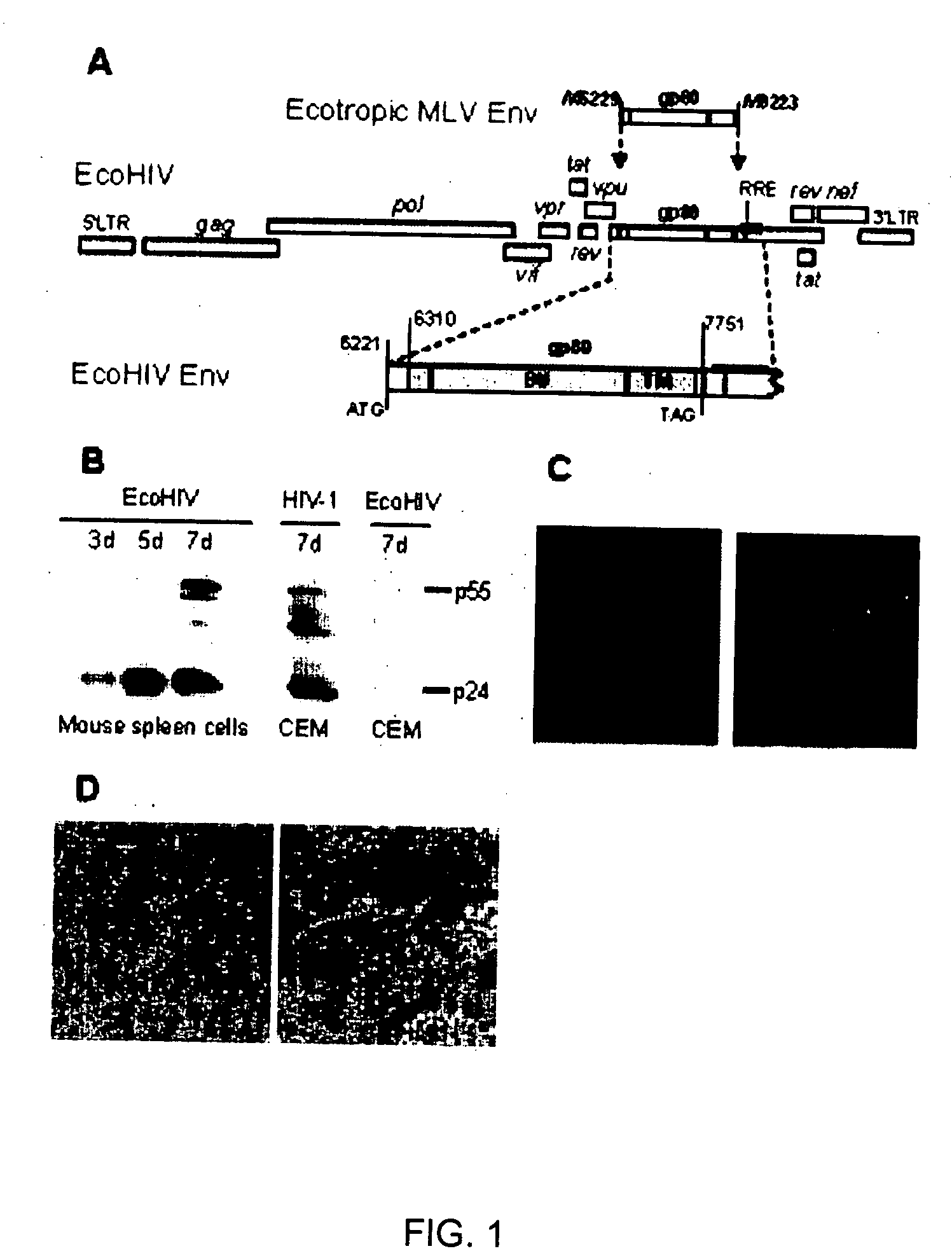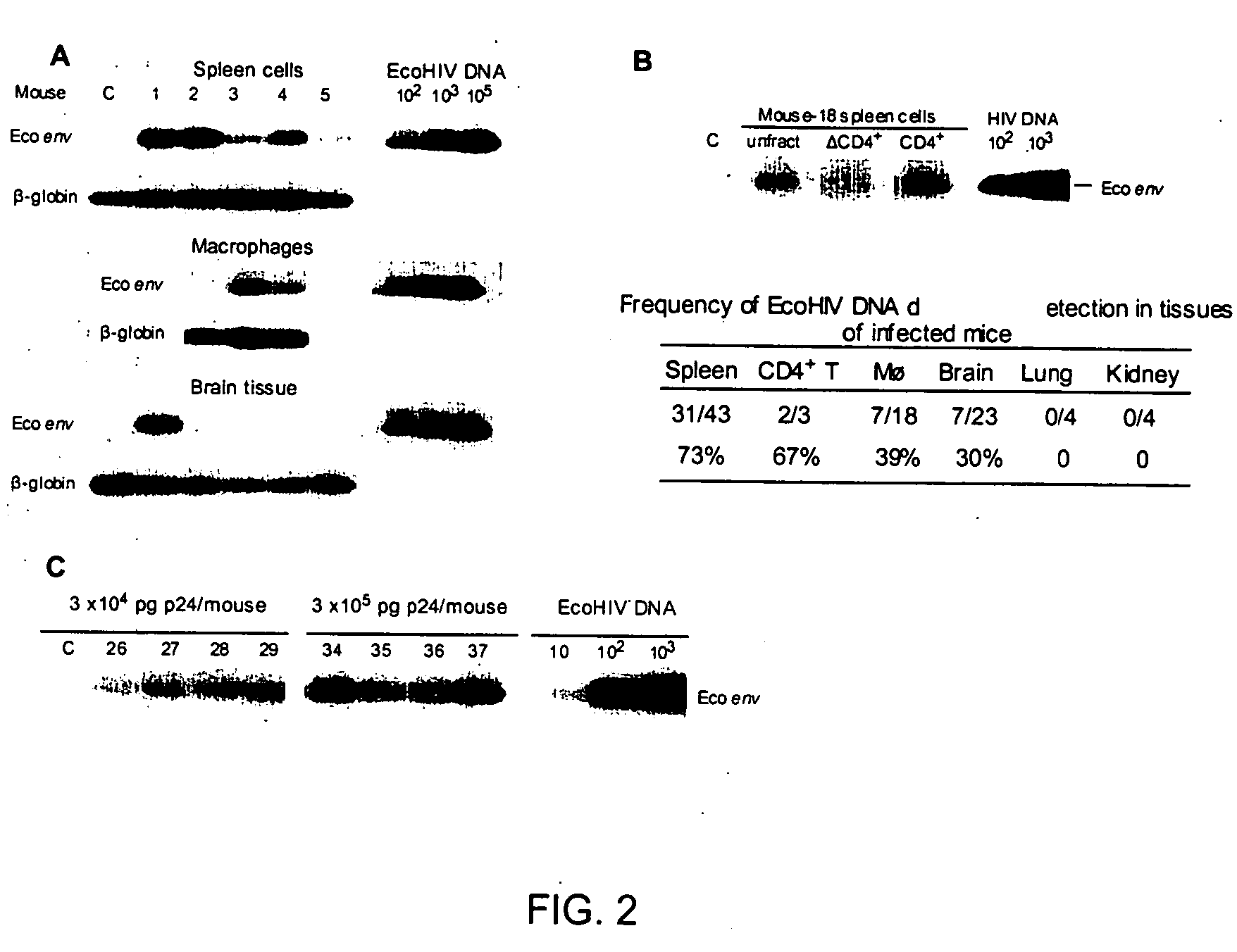Development of a murine model of HIV-1 infection on the basis of construction of EcoHIV, a chimeric, molecular clone of human immunodeficiency virus type 1 and ecotropic moloney murine leukemia virus competent to infect murine cells and mice
- Summary
- Abstract
- Description
- Claims
- Application Information
AI Technical Summary
Benefits of technology
Problems solved by technology
Method used
Image
Examples
example 1
Materials and Methods
Design of EcoHIV, a Chimeric HIV-1 Construct that Targets Rodent Cells
[0034] EcoHIV is designed to carry all the coding and regulatory regions of the HIV-1 genome, except for the gene encoding the viral envelope glycoprotein, gp120 that targets the virus to the CD4 bearing cells. In its place, the coding region for ecotropic murine leukemia virus gp80, that targets the virus to rodent, but not to human cells, was inserted. Specifically, EcoHIV was constructed based upon the full-length infectious HIV-1 molecular clone, NL4-3, and the full-length infectious ecotropic MuLV clone, NCAC. Referring to the numbering systems of NL4-3 and NCAC, respectively, a fragment from nucleotide 6310 to 7750, encoding amino acids 31 to 510 of HIV-1 gp120 was excised from NL4-3 and replaced in frame with a fragment from nucleotide 6129 to 8823 of NCAC, encoding amino acids 2 to 697 and the termination codon of gp80. The resulting envelope glycoprotein contains 727 amino acids. T...
example 2
Results
Host Range of EcoHIV in Culture
[0044] To redirect HIV-1 to infect the rodent, the ecotropic MLV gp80 gene carrying its own stop codon was inserted in-frame into the NL4-3 env gene, preserving the first 90 coding residues, deleting the subsequent 1440, and resuming HIV-1 near the beginning of the gp41 coding region (FIG. 1A). The resulting chimeric virus, EcoHIV, contains all the known coding and regulatory regions of the HIV-1 genome with the exception of gp120; gp41 is unlikely to be expressed because it lacks an in-frame codon for initiation of translation. The biological activity of EcoHIV in culture was tested using several approaches. Mitogen stimulated murine splenic lymphocytes were infected and cells harvested over one week of infection for analysis of the expression of HIV-1 p24 by Western blot (FIG. 1B). Cells of the transformed human T cell line, CEM, were exposed to HIV-1 or to EcoHIV as positive and negative controls, respectively. Fully processed p24 increase...
PUM
 Login to View More
Login to View More Abstract
Description
Claims
Application Information
 Login to View More
Login to View More - R&D
- Intellectual Property
- Life Sciences
- Materials
- Tech Scout
- Unparalleled Data Quality
- Higher Quality Content
- 60% Fewer Hallucinations
Browse by: Latest US Patents, China's latest patents, Technical Efficacy Thesaurus, Application Domain, Technology Topic, Popular Technical Reports.
© 2025 PatSnap. All rights reserved.Legal|Privacy policy|Modern Slavery Act Transparency Statement|Sitemap|About US| Contact US: help@patsnap.com



